Dussehra derives from ‘dasha hara‘ or the triumph over the Lankan King Ravana. India, with its rich plethora of mythology, traditions, customs, cultural rites and mores all stitched into one fabric offers rich diverse experiences of the same festival dipped in different ethnic traditions. In Bengal, Dashami is the celebration of the glorious, all-powerful Goddess Durga slaying Mahishasur, the buffalo demon and her return to her maternal home with her children for five days.
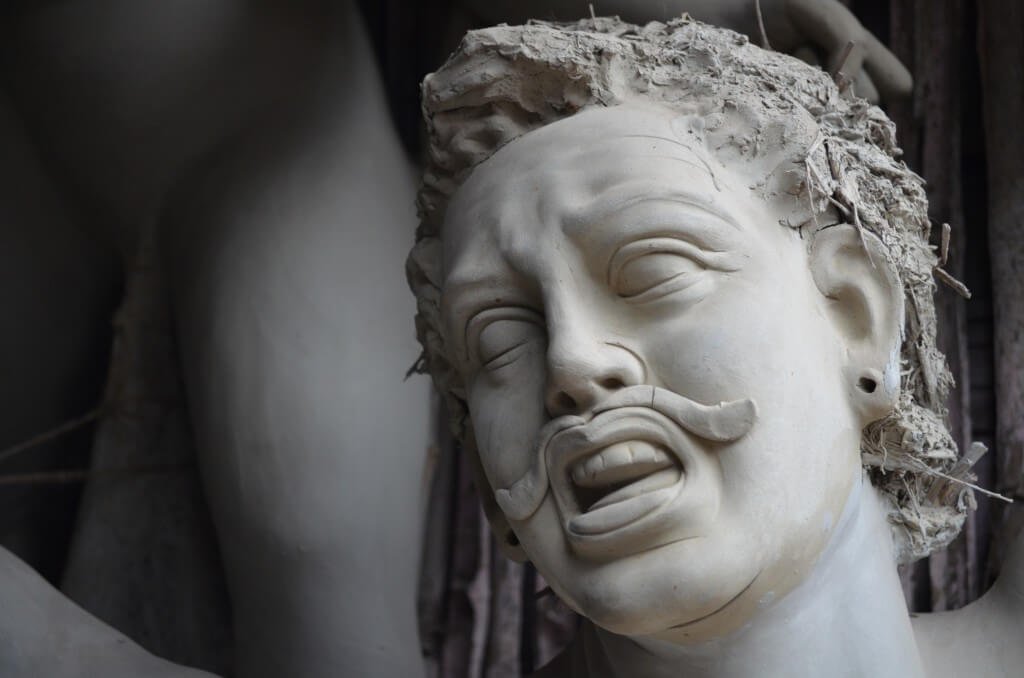
In Delhi and other parts of India, Dussehra is celebrated as the triumph of righteousness over evil and Ram defeating Ravana is an allegory of that. Effigies of Ravana are burnt with spectacular firecrackers reaching the sky and the whole of India just revels in the festival. Take a look at how different parts of India celebrates Dussehra.
1. West Bengal Dashami
People hold earthen pots of burning coconut husk and dance in huge pandals.
Durga Puja, a ten day riot of colours, sounds, lights, devotion and an orgy of food is famous in Bengal. Steeped in pure revelry, breath-taking pandals with themes and painstaking handiwork are erected with the all-powerful Goddess Durga idols placed in them. The Goddess is worshiped to the thump of dhak (drums) and cymbals. Clouds of incense fill the air as people hold earthen pots of burning coconut husk with their mouths and hands and dance. People flock to pandals till the wee hours of the morning and gorge on food at food stalls in every corner.
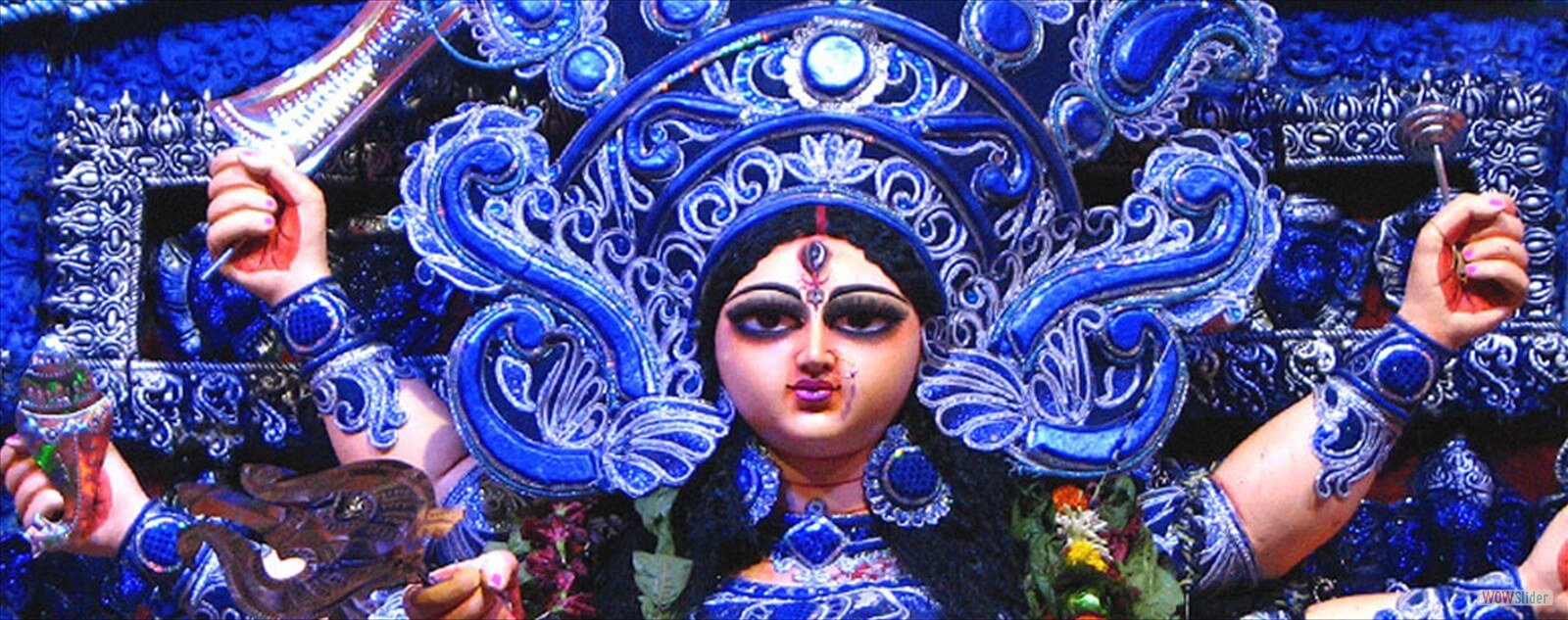
Married women smear sindoor on each other for the welfare of their husbands.
On Dashami, married women smear sindoor (vermilion powder) on the Goddess as it is believed that she is returning to her in-laws house. The leftover sindoor is then smeared on to each other by married women (sindoor khela) in front of the Goddess for the welfare of their husbands and long, happy married lives.
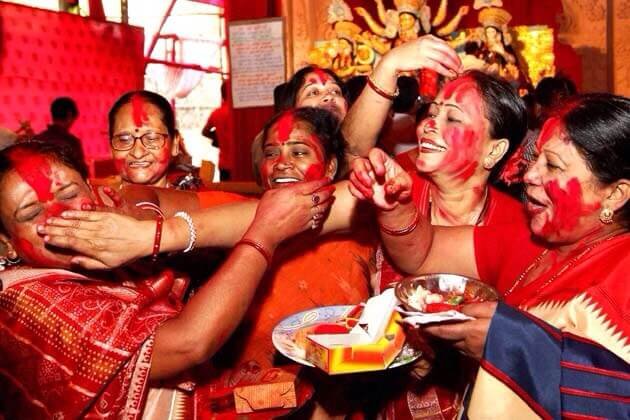
The idol is then taken for immersion (bhashan) amidst much fanfare and loud music as people dance in the procession and light fire crackers.
2. Mysore Dasara
The Mysore Palace is lit with more than 100,000 lights for a month.
Dasara is a grand affair in Mysore, and if you visit the city at this time you’ll be treated to the sight of the Mysore Palace lit with more than 100,000 lights. The Palace remains lit for a whole month for this occasion. The 400-year-old celebrated festival in Mysore, has an elephant procession with colourful caparisoned elephants going towards the Dasara ground.
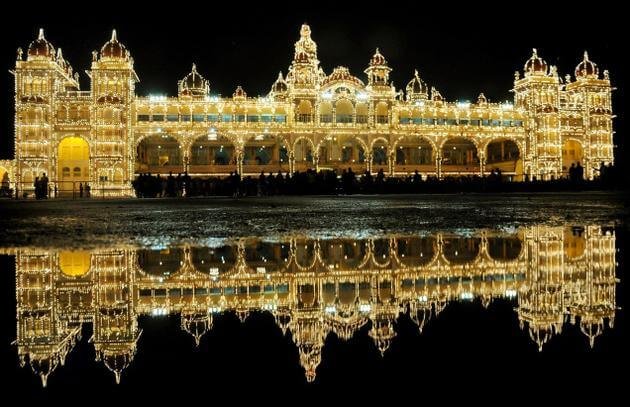
A mounted elephant procession goes through the city to showcase Mysore’s splendour.
The Goddess Chamundeshwari is worshiped on this day and then mounted on a golden Ambari or an elephant mounted throne for a grand procession throughout the city to showcase the royalty and splendour of Mysore. Visit the Dasara ground for its exhibition and various stalls for food, shopping and rides.
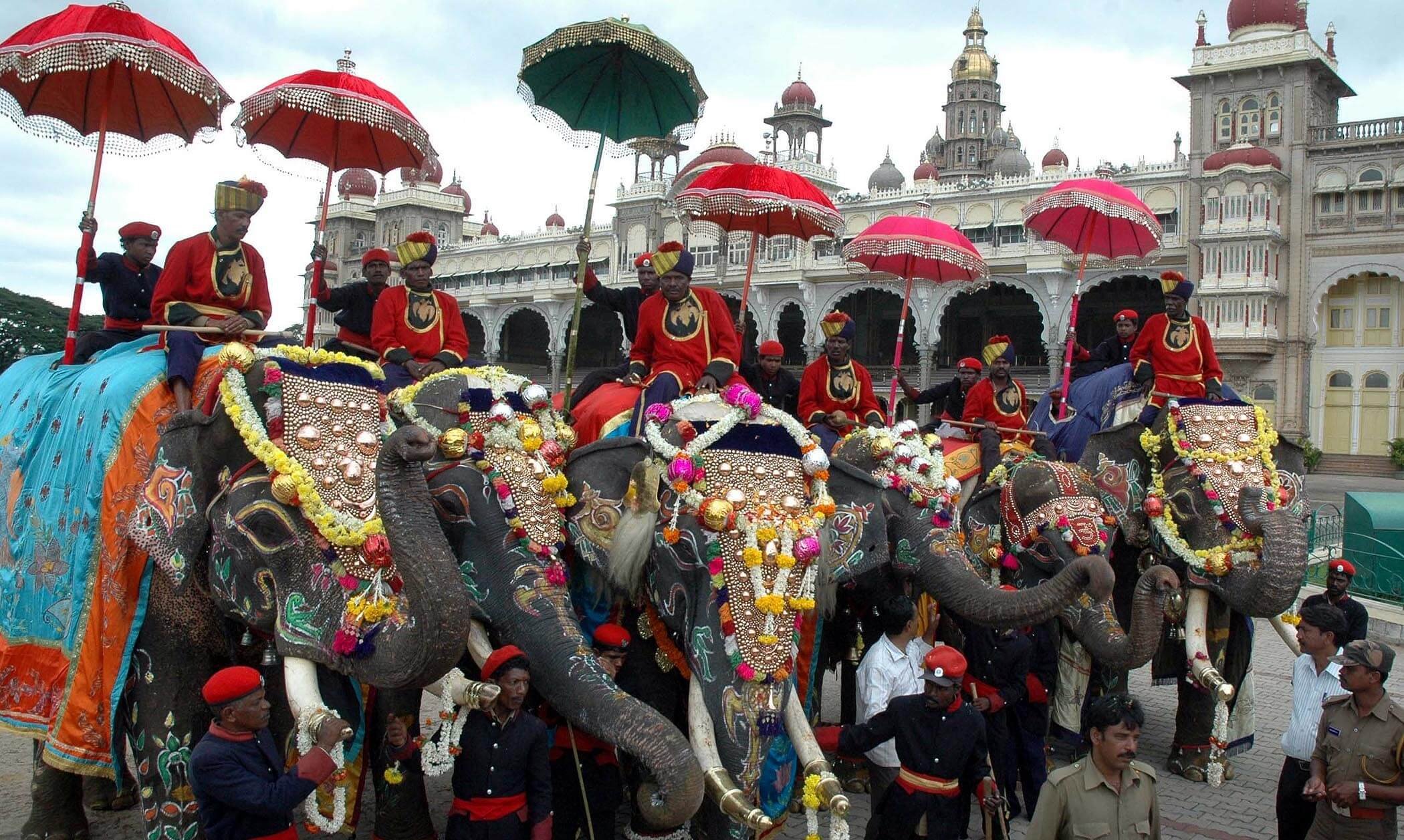
3. Mangalore Dasara
Young men dress up as tigers and fervently dance through the streets.
The main attraction of Mangalore Dasara apart from the bedecked city, are the various folk art forms like tiger and bear dance which are performed. In this, young males in troops dress up as tigers, accompanied by bands of drummers. The fervent, energetic dance is performed to the beat of the drums, while touring the streets and houses.
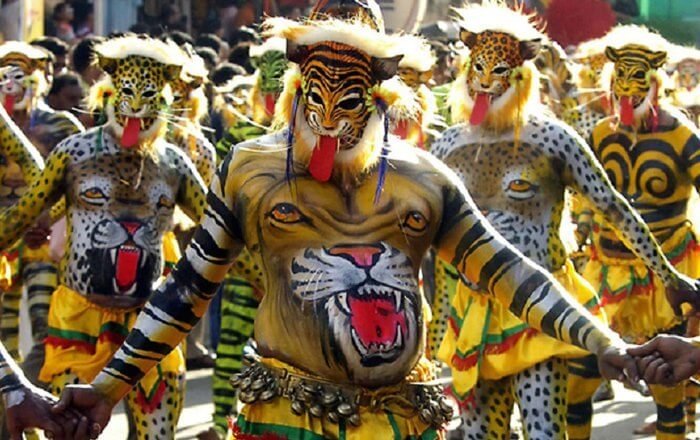
Processions throughout the city carry idols of Navadurgas along with Mahaganapathi and Sharada with folk dances and music.
4. Andhra Pradesh Vijaydashami
Huge processions go through the streets with music and light on different vehicles.
All over Andhra, Mahishasurmarthini, is worshiped in homes and communities. Ceremonies such as Lalita Sahasranaama Paarayana and Kumkumaarchana pooja are performed by married women for the well-being of their husbands and marital, domestic felicity. There are a large number of devotees to be found at this time in Tirumala, the abode of Lord Venkateswara who come to witness the grand scale of celebrations of Sreevari Brahmotsavaalu. Spectacular processions with the Lord Venkateswara and his consorts Sridevi and Bhudevi by his side are carried out on the streets with music and lights on different vehicles.
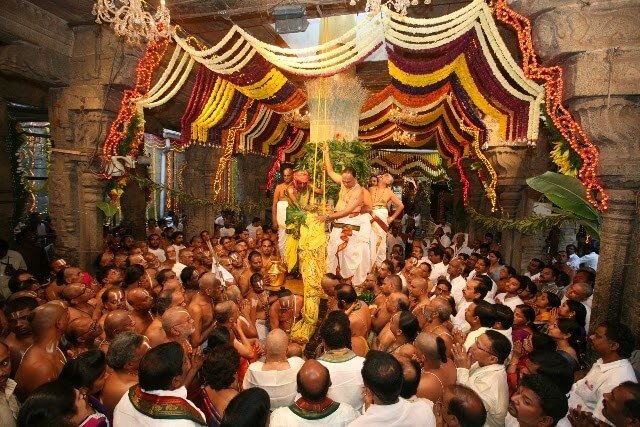
The Goddess is taken on a swan boat ride known as the Hamsa Vaahanam on the river Krishna.
Vijaywada witnesses celebrations in worship of Kanaka Durga ammavaaru at the Kanaka Durga temple on Indrakeeladri hill. The Goddess exudes serene beauty and gentle blessings. On the final day, the Goddess is taken on a swan boat ride known as the Hamsa Vaahanam on the river Krishna.
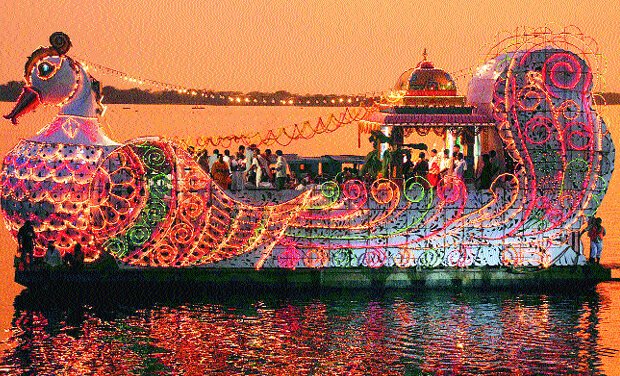
5. Delhi Dussehra
Giant effigies of Ravana, Kumbhkaran and Meghnad are burned.
If you’re in Delhi at this time of the year, make sure you catch Ramlila, a spectacular theatrical rendition of the Ramayana complete with costumes and dramatic dialogues in the traditional folk-lore form. Be ready to brave crowds during the burning of giant effigies of Ravana, Kumbhkaran and Meghnad. Actors dressed as Lord Ram and Lakshman shoot lit arrows at the effigies which are stuffed with firecrackers, the effigies then burn and fizzle towards the sky, as crowds cheer, signifying the victory of good over evil.
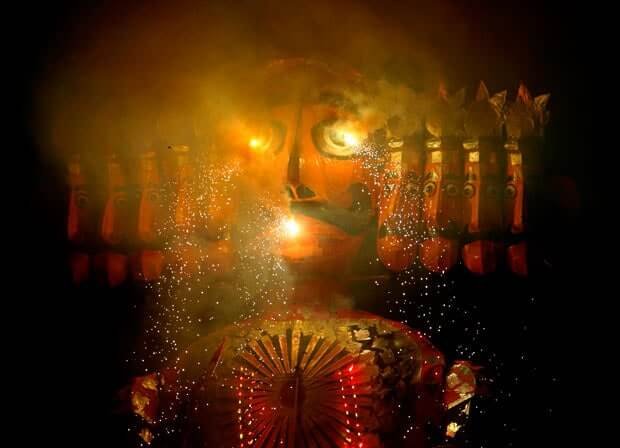
6. Gujarat Dussehra
Men and women in traditional clothing dance all night to folk songs.
The nine days of Navratri is a whirlwind of colourful ghagras, dancing feet and dandiya sticks moving to the rhythm of fast paced folk-songs. Food, dance and music flow in abundance. After the worship of Ma Ambe, an evening of garba ensues as men in traditional kedias and women in lehengas dance to folk songs all night long.
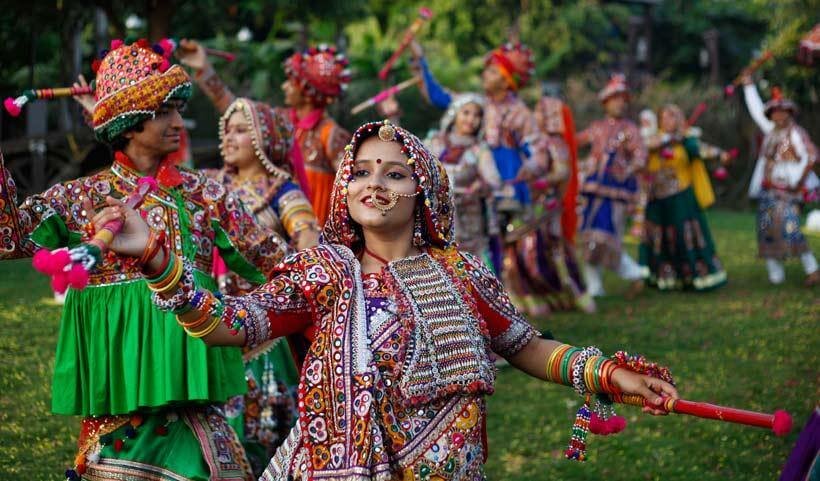
7. Tamil Nadu Vijaydashami
People dress up as the Goddess, beggars or monkeys and beg for alms.
Kulasekharapattinam, a sleepy little village in Thoothukudi district comes alive with visitors flocking the doors of the famous Mutharamman Temple. Some are dressed up as the fierce Goddess Kali, the warrior form of Goddess Durga, some as beggars or monkeys and they beg for alms, an exercise meant to teach the important lesson of humbleness. The atmosphere is electrifying and sounds of rhythmic drumbeats assail the night sky. The Devi is adorned with flowers and jewellery and is taken out on processions, as people crowd to receive her blessings. Each of the nine forms of the Goddess are worshiped during the nine days of Navratri.
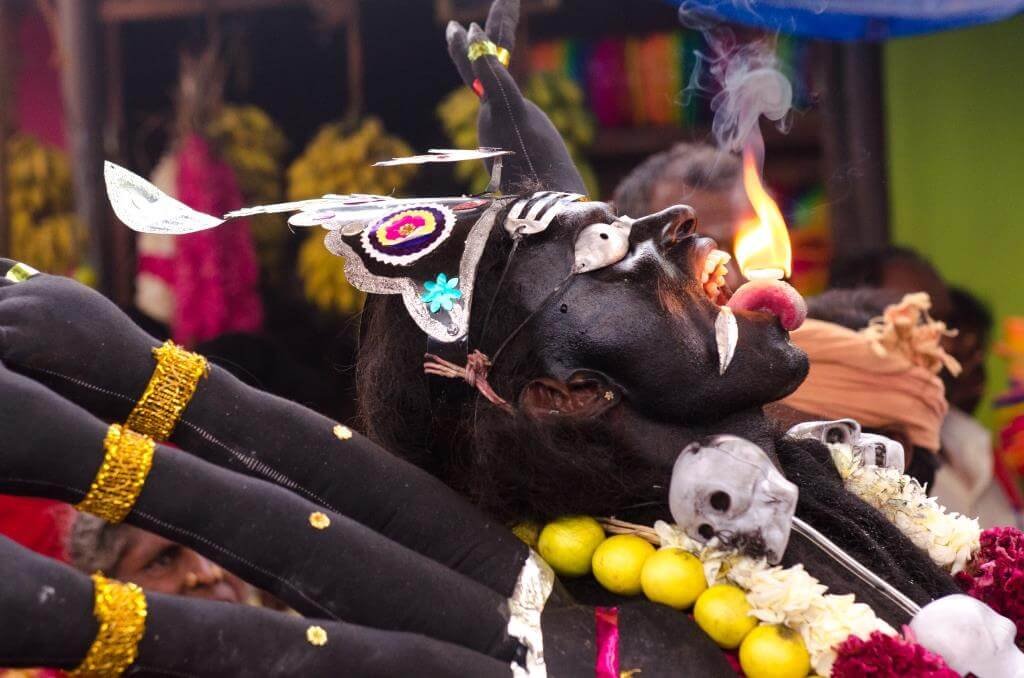
People go in a procession to witness the samharam on the beach.
On Vijaydashami, the tenth day the Goddess takes on the form of Annai Parasakthi, and people go in a procession to witness the samharam on the beach. Traditonal dance forms such as Karagattam, Oyilattam and Mayilattam are performed along with instrumental music.
9 golu dolls signifying the nine forms of the Goddess Durga are placed in houses.
As Navratri starts, 9 golu dolls signifying the nine forms of the Goddess Durga are set out in homes. Earlier a tradition followed only by affluent prominent families, it has filtered down to households all over Tamil Nadu.
8. Kullu Dasara
A procession of people with idols of different deities travels to Dhalpur Maidan.
The valley swings into festivities from Dussehra onwards, on which day, a grand procession of people with the idols of deities from nearby temples are carried on their heads and brought to Dhalpur Maidan where Lord Raghunath is worshiped. It is said that the worship of Lord Raghunath in the valley started as early as the 17th century when King Jagat Singh installed an idol of Lord Raghunath on his chariot as a mark of penance. Lord Raghunath then became the presiding deity of the valley.
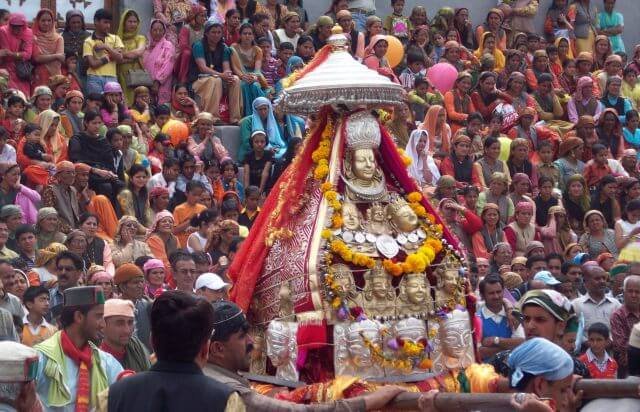
The fair ground is full of folk dance and music with authentic handicrafts. On the last day, a heap of grass and wood on the banks of Beas river is burnt to symbolise the burning of Lanka.
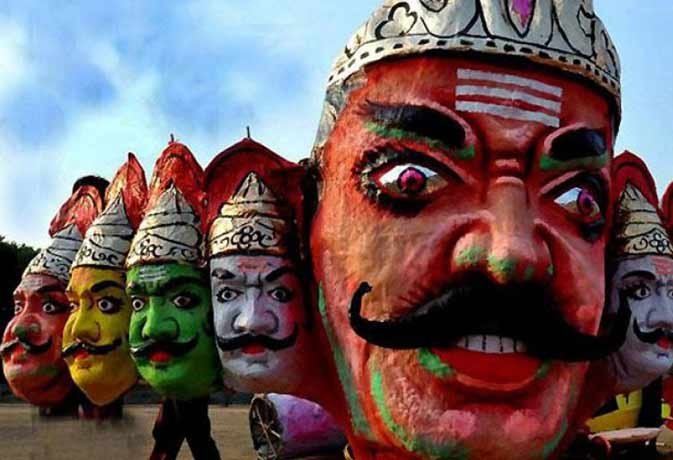
So where are you going to be this Dussehra?

















